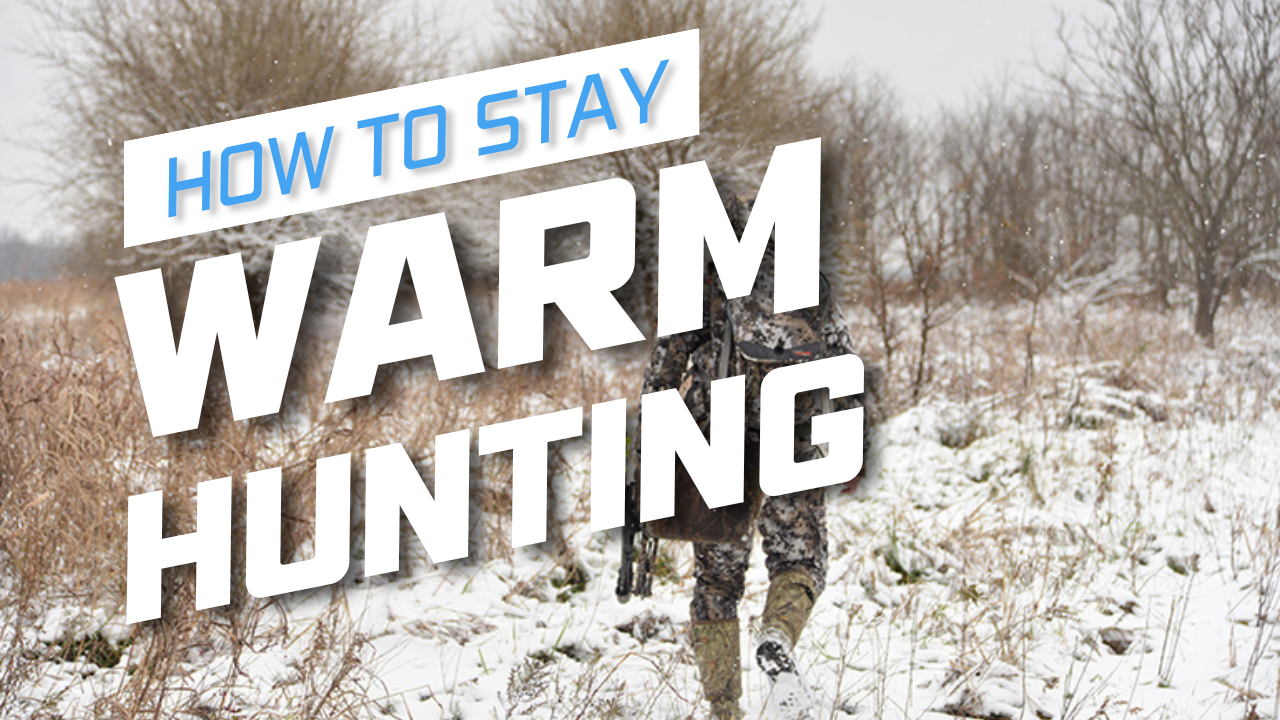
Staying warm during a hunt isn't just about personal comfort; it's essential for your safety and overall performance.
When you're cold, your body's core temperature drops, leading to reduced dexterity, slower reaction times, and impaired decision-making.
Furthermore, extreme cold can even pose serious health risks like hypothermia and frostbite.
Therefore, staying warm is not merely a matter of comfort; it's a critical element for maintaining your well-being while pursuing game in cold weather.
1) Heated Clothing
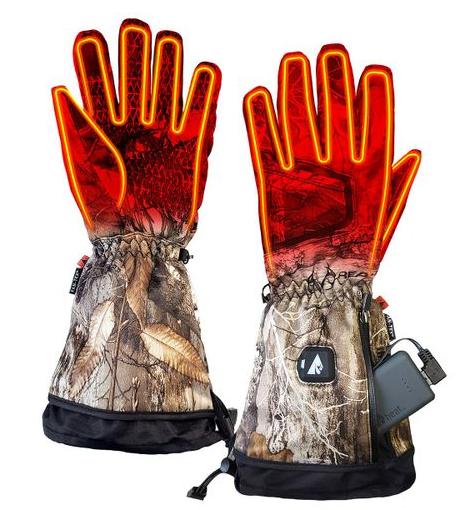
Heated clothing has become increasingly popular among outdoor enthusiasts, including hunters, as it offers a reliable and convenient way to stay warm in cold conditions. Here's an expanded overview of heated clothing and how it can enhance your comfort during hunting trips:
1. Types of Heated Clothing:
Heated Jackets/Vests: Heated jackets and vests are perhaps the most common types of heated clothing. They typically feature built-in heating elements powered by rechargeable lithium-ion batteries. These elements are strategically placed to provide warmth to your core, where it's needed most. You can adjust the temperature settings to suit your comfort level.
Heated Gloves: Heated gloves are designed with heating elements on the back of the hand and fingers. They keep your hands warm and dexterous, making it easier to handle your hunting equipment and stay in the field for longer.
Heated Socks/Insoles: Cold feet can be a real issue during hunts. Heated socks or insoles feature heating elements in the sole and toe areas, ensuring your feet stay toasty throughout the day.
Heated Pants/Leggings: Some heated pants or leggings are available to provide extra warmth to your legs. These can be particularly useful in extremely cold conditions.
2. Battery Technology:
- Most heated clothing items use rechargeable lithium-ion batteries. These batteries are lightweight, compact, and have a reasonable lifespan. Ensure your batteries are fully charged before heading out and consider carrying spare batteries in case you need to replace them during extended hunts.
3. Temperature Control:
- Heated clothing often comes with adjustable temperature controls. This allows you to customize the level of warmth based on the weather conditions and your personal comfort. Some models offer multiple heat settings, giving you flexibility throughout the day.
4. Durability and Weather Resistance:
- Quality heated clothing is designed to withstand outdoor conditions. Look for items that are water-resistant or waterproof, as they can handle moisture and precipitation without compromising the heating elements or batteries.
5. Comfort and Fit:
- Heated clothing is typically designed to fit comfortably under your regular hunting gear, ensuring you can move freely without feeling restricted. Make sure to choose the right size and style that works with your hunting attire.
6. Safety Features:
- Heated clothing usually includes safety features like overheat protection and automatic shut-off timers to prevent any overheating accidents.
7. Benefits for Hunters:
Extended Hunts: Heated clothing allows hunters to stay out in the field for longer periods, increasing the chances of a successful hunt.
Increased Focus: Staying warm and comfortable helps you maintain focus on the hunt rather than being distracted by the cold.
Reduced Risk of Cold-Related Injuries: Heated clothing significantly reduces the risk of cold-related injuries like frostbite and hypothermia, which can be life-threatening.
Versatility: Heated clothing can be used for various outdoor activities beyond hunting, such as fishing, camping, hiking, and skiing.
While heated clothing can be an excellent addition to your hunting gear, it's essential to use it in conjunction with other layering techniques and cold-weather precautions. Additionally, understanding the limitations of your heated clothing, such as battery life, can help you plan your hunts effectively and stay warm throughout your outdoor adventures.
Check out my heated gear guides:
2) Layering

Layering is a fundamental clothing technique that involves wearing multiple layers of clothing to regulate your body temperature, manage moisture, and stay comfortable in various weather conditions. For hunters, layering is crucial for staying warm, dry, and adaptable during outdoor pursuits. Here's an expanded explanation of the principles and benefits of layering for hunting:
1. Base Layer:
The base layer is the innermost layer of clothing, in direct contact with your skin. It serves two primary purposes:
a. Moisture Management: A good base layer wicks sweat away from your skin, keeping you dry and preventing moisture from chilling your body when you slow down or stop moving.
b. Insulation: Some base layers provide lightweight insulation. Look for materials like merino wool or synthetic fabrics designed to trap a small layer of warm air against your skin.
Consider long-sleeved tops and bottoms for full coverage, and choose a weight (light, mid, or heavyweight) based on the expected temperature.
2. Insulating Layer:
The insulating layer goes over the base layer and provides warmth by trapping warm air close to your body. Common insulating materials include fleece, down, and synthetic fill.
This layer should be thicker than the base layer but not too bulky, allowing for ease of movement. Depending on the conditions, you can adjust the thickness of your insulating layer.
3. Outer Layer (Shell Layer):
The outer layer protects you from the elements, including wind, rain, and snow. It should be both waterproof and windproof.
Choose a hunting-specific jacket and pants that offer camouflage patterns suitable for your hunting environment. These outer layers often feature quiet materials and pockets for carrying gear.
In extremely cold conditions, consider insulated outer layers for added warmth.
4. Accessories:
- Don't forget about accessories like hats, gloves, and neck gaiters. These items can make a significant difference in keeping you warm and comfortable.
Benefits of Layering for Hunting:
Temperature Regulation: Layering allows you to adjust your clothing as the weather and your activity level change. You can add or remove layers to stay comfortable.
Moisture Management: By using a moisture-wicking base layer, you can prevent sweat from accumulating and turning cold. A dry body is essential for staying warm.
Versatility: Layering provides versatility for varying weather conditions. You can mix and match layers to create the right combination for any situation.
Durability: Layering can also help protect your clothing. The outer layer acts as a shield against rough terrain, thorns, and other outdoor hazards.
Stealth and Camouflage: Many hunting-specific outer layers are designed with camouflage patterns to help you blend into your hunting environment.
Tips for Effective Layering:
Avoid Cotton: Cotton retains moisture and can make you feel cold. Opt for moisture-wicking and quick-drying materials.
Fit Matters: Make sure your layers fit comfortably without being too tight or too loose. Proper fit allows for efficient air circulation and insulation.
Test and Adjust: Practice layering in different conditions to see what works best for you. Adjust the number and type of layers based on your experiences.
Pay Attention to Extremities: Keep your hands, feet, and head warm with appropriate gloves, socks, and headgear. Cold extremities can make you feel much colder overall.
Incorporating layering into your hunting gear strategy will help you stay comfortable and focused during long days in the field, regardless of the weather conditions. It's a versatile approach that can adapt to a wide range of hunting environments and seasons.
3) Wool Clothing
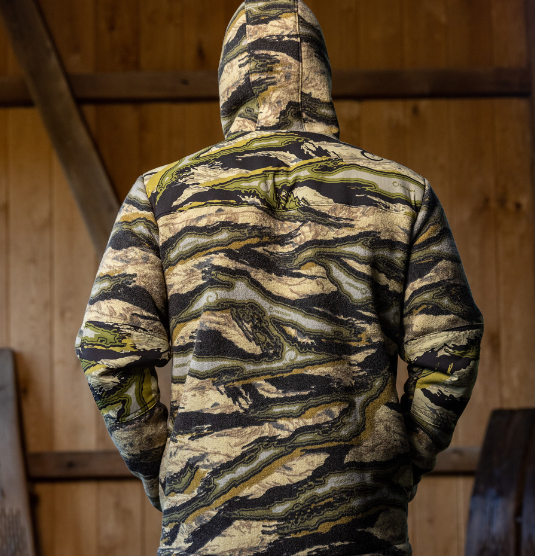
Wool clothing has been a staple in outdoor apparel for centuries, and for good reason. This natural fiber offers a range of benefits that make it a preferred choice for hunters and outdoor enthusiasts. Here's an expanded explanation of wool clothing for hunting and its advantages:
1. Natural Insulation:
- Wool is an excellent insulator, capable of trapping warm air close to your body, even when wet. This means that wool clothing retains its insulating properties in damp conditions, unlike some synthetic materials that lose their effectiveness when wet.
2. Moisture Management:
- Wool has a unique ability to wick moisture away from your skin while simultaneously absorbing moisture from the air. This means it can keep you dry and comfortable by wicking away sweat and preventing a buildup of moisture inside your clothing.
3. Temperature Regulation:
- Wool is a natural thermoregulator. It helps your body maintain a stable temperature by releasing excess heat when you're warm and retaining heat when you're cold. This property makes it suitable for a wide range of temperatures and activity levels during hunting.
4. Odor Resistance:
- Wool has natural antimicrobial properties, which make it resistant to odors. This is particularly advantageous for hunters who may need to remain scent-free to avoid spooking game.
5. Durability:
- Wool fibers are durable and can withstand wear and tear, making wool clothing a long-lasting investment. It can resist abrasion and maintain its shape even after extended use.
6. Fire Resistance:
- Wool is naturally flame-resistant, making it a safe choice for hunters who may need to deal with open fires or campfires during their expeditions.
7. Softness and Comfort:
- Wool is soft and comfortable to wear, providing itch-free comfort, especially when compared to older, coarser wool garments. Many modern wool garments are designed to be incredibly comfortable against the skin.
8. Sustainability:
- Wool is a renewable and sustainable resource as it is shorn from sheep annually. It's also biodegradable, reducing environmental impact.
Types of Wool Clothing for Hunting:
Merino Wool: Merino wool is known for its exceptional softness and moisture-wicking properties. It's often used in base layers, socks, and lightweight garments.
Wool Blends: Some hunting clothing combines wool with other fibers like synthetic materials or nylon to enhance durability and stretch while retaining wool's natural benefits.
Heavyweight Wool: In extremely cold conditions, heavy wool garments like sweaters or pants can provide additional warmth and insulation.
Wool Accessories: Wool hats, gloves, and socks are essential for keeping extremities warm during hunts.
Caring for Wool Clothing:
Wool clothing should be hand washed or machine washed on a gentle cycle using a mild detergent. Avoid excessive agitation and high heat, as these can cause wool to shrink.
Lay wool items flat to dry to maintain their shape.
Store wool clothing in a cool, dry place to prevent moths and other pests from damaging it.
Wool clothing is a versatile and reliable choice for hunters due to its natural properties that help regulate body temperature, manage moisture, resist odor, and provide durability. When used in conjunction with proper layering techniques, wool garments can be an integral part of a successful and comfortable hunting experience.
4) Hunting Boots
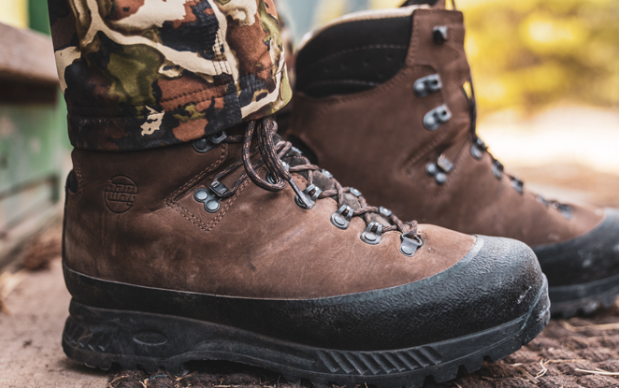
Hunting boots are a critical piece of gear for any hunter, as they can significantly impact your comfort, safety, and effectiveness in the field. These specialized boots are designed to withstand the rigors of hunting while providing essential features for different hunting environments. Here's an expanded overview of hunting boots and what to consider when choosing the right pair:
1. Types of Hunting Boots:
Hiking Boots: These are versatile boots suitable for hunters who cover a lot of ground during their hunts. They offer good support, traction, and comfort for various terrains.
Insulated Boots: Designed for cold weather hunting, insulated boots feature added layers of insulation to keep your feet warm. They come in different levels of insulation, so choose one appropriate for your expected weather conditions.
Rubber Boots: Rubber boots are waterproof and excellent for wet and muddy environments. They are often used for waterfowl hunting and early season hunts.
Snake Boots: In regions with venomous snakes, snake-proof boots are a must. They are made with materials that resist snake bites, protecting your lower legs and feet.
Pac Boots: Pac boots have a removable insulating liner and are ideal for extremely cold conditions. They offer both warmth and waterproofing.
Mountaineering Boots: These are designed for hunting in rugged, mountainous terrain. They provide excellent support, stability, and durability for challenging environments.
2. Materials:
Leather: Full-grain leather is known for its durability and resistance to abrasion. It also molds to the shape of your foot over time, providing a custom fit. However, leather boots often require more maintenance to stay waterproof.
Synthetic Materials: Many modern hunting boots use synthetic materials like nylon or Gore-Tex for waterproofing and breathability. They tend to be lighter and require less maintenance than leather.
3. Waterproofing:
- Waterproof hunting boots are essential for keeping your feet dry in wet conditions. Look for boots with waterproof membranes like Gore-Tex or proprietary technologies from reputable brands.
4. Insulation:
- Insulated hunting boots are crucial for cold weather hunting. Choose the level of insulation based on the temperature and duration of your hunts. Thinsulate is a commonly used insulation material.
5. Traction:
- Good traction is vital for safety and stability. Look for boots with aggressive outsoles designed to provide grip on various terrains, from mud to rocky surfaces.
6. Weight:
- The weight of your boots can affect your mobility and comfort during a hunt. Consider the type of hunting you do when choosing between lightweight and heavier, more durable options.
7. Fit and Comfort:
- Proper fit is crucial to prevent blisters and discomfort during long hunts. Make sure there's enough room for your toes and that the boots provide good arch and ankle support.
8. Camouflage:
- Some hunting boots come in camouflage patterns to help you blend into your hunting environment. This can be particularly important for stealthy approaches.
9. Scent Control:
- Scent control technology can help reduce your odor footprint and increase your chances of remaining undetected by game animals.
10. Maintenance:
- Regularly clean and maintain your hunting boots to ensure they remain in good condition. Follow the manufacturer's recommendations for cleaning and waterproofing treatments.
11. Break-In Period:
- New hunting boots often require a break-in period to ensure they are comfortable during extended hunts. Wear them around the house or on short hikes to help them conform to your feet.
Investing in high-quality hunting boots that match your hunting style and environment is essential. Properly cared-for hunting boots will not only keep you comfortable but also help you perform better and stay safe during your hunting adventures.
5) Hats And Gloves
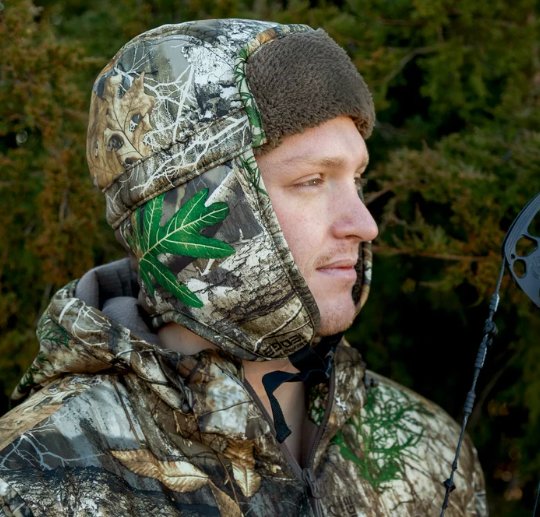
Hats and gloves are essential accessories for hunters, providing protection, warmth, and concealment. Properly chosen and used, they can greatly enhance your hunting experience. Here's an expanded look at hats and gloves for hunting:
Hats:
Types of Hunting Hats:
Camo Hats: Camouflage patterns are designed to help hunters blend into their surroundings. Camo hats come in various styles, including baseball caps, boonie hats, and beanie hats, to match different hunting environments.
Blaze Orange Hats: Safety is paramount in hunting. In many areas, wearing blaze orange (also known as hunter orange) is mandatory during certain hunting seasons. Blaze orange hats ensure you're visible to other hunters and help prevent accidents.
Insulated Hats: For cold weather hunting, insulated hats with ear flaps or a face mask can keep you warm and protected from frostbite.
Sun Hats: Wide-brimmed hats offer protection from the sun's harmful rays during warm-weather hunts. They help prevent sunburn and provide shade for your face and neck.
Bug Hats: In areas with biting insects, bug hats with built-in mesh netting protect your face and neck from annoying pests.
Materials:
Wool: Wool hats provide warmth even when wet and are great for cold-weather hunts.
Synthetics: Lightweight synthetic materials are excellent for warm-weather hunts as they wick moisture and dry quickly.
Blaze Orange Fabric: Blaze orange hunting hats are typically made from durable and highly visible fabrics.
Fit and Comfort:
- Ensure your hat fits comfortably and securely, especially in windy conditions. Adjustable straps or cords can help achieve a snug fit.
Concealment:
- Camouflage hats are essential for staying hidden from the keen eyes of game animals. Choose patterns that match your hunting environment.
Versatility:
- Some hunting hats are designed with removable flaps or liners, making them adaptable to various weather conditions.
Care:
- Maintain your hunting hat by keeping it clean and free from scents that may spook game animals. Follow care instructions to preserve its effectiveness.
Gloves:
Types of Hunting Gloves:
Camouflage Gloves: Camo gloves help conceal your hands and fingers while hunting. They come in various styles, including full-fingered, half-fingered, and fingerless.
Insulated Gloves: For cold weather hunting, insulated gloves provide warmth. Look for gloves with Thinsulate or other insulation materials.
Waterproof Gloves: Waterproof gloves are essential for wet conditions. They keep your hands dry and prevent discomfort caused by wet, cold hands.
Convertible Gloves: Some gloves have a fold-back or removable finger cap, allowing you to switch between full finger coverage and fingerless gloves for tasks that require dexterity.
Shooting Gloves: Designed for firearm hunters, shooting gloves offer grip and trigger finger dexterity while still providing concealment.
Archery Gloves: Archery hunters may prefer fingerless or minimalist gloves to maintain sensitivity and control while shooting.
Materials:
Leather: Leather gloves are durable and provide good grip. They may need some breaking in but can last for years with proper care.
Synthetics: Synthetic materials like nylon and neoprene are lightweight and often waterproof, making them suitable for various weather conditions.
Fit and Dexterity:
- Your gloves should fit snugly without being too tight. Ensure they allow for adequate finger movement and dexterity, especially if you need to manipulate equipment or operate a firearm.
Scent Control:
- Scent control technology in gloves can help reduce odors and prevent game animals from detecting your scent.
Glove Liners:
- In extremely cold conditions, consider using glove liners for additional insulation and warmth.
Care:
- Maintain your gloves by keeping them clean and scent-free. Wash them according to the manufacturer's instructions.
Hats and gloves are often overlooked pieces of hunting gear, but they play a crucial role in keeping you comfortable, concealed, and safe in the field. Invest in quality accessories that match your hunting environment and needs to maximize your chances of success.
6) Hand And Foot Warmers
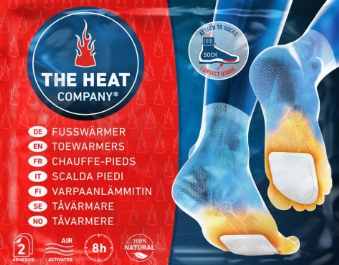
Foot and hand warmers are portable, disposable, or rechargeable heat sources designed to provide warmth to your extremities, specifically your hands and feet. They are popular among hunters, outdoor enthusiasts, and anyone facing cold weather conditions. Here's an expanded overview of foot and hand warmers and how to use them effectively:
1. Types of Warmers:
Disposable Warmers: These are single-use warmers that generate heat through a chemical reaction, usually involving iron powder, salt, and activated carbon. Common types include air-activated hand warmers and foot warmers. They provide consistent heat for several hours, typically up to 10 hours or more, depending on the brand and conditions.
Rechargeable Warmers: Rechargeable hand and foot warmers use rechargeable lithium-ion batteries to generate heat. They are more eco-friendly than disposable warmers and can be recharged hundreds of times.
2. How They Work:
Disposable Warmers: When exposed to air, the chemical components inside these warmers react with oxygen, releasing heat as a byproduct. They typically come with adhesive backing, allowing you to attach them to the inside of your gloves or insoles of your boots.
Rechargeable Warmers: These warmers contain a heating element powered by a rechargeable battery. You can adjust the heat level and activate the warmer with a button or control panel.
3. Advantages:
Quick Heat: Both disposable and rechargeable warmers provide rapid, on-demand heat within minutes, making them ideal for cold weather situations.
Portability: Warmers are compact and lightweight, so they're easy to carry in your hunting gear, pockets, or backpack.
Longevity: Disposable warmers offer extended heat for several hours, making them suitable for all-day hunting trips. Rechargeable warmers can be used repeatedly over many seasons.
4. Using Foot Warmers:
Place foot warmers inside your boots or insoles before putting your boots on. Ensure they are positioned near the toe area for maximum warmth.
Some foot warmers are designed with adhesive backing to help them stay in place inside your boots.
Disposable foot warmers are activated by exposure to air. Once opened, they start generating heat, so use them when you're ready to begin your hunt.
5. Using Hand Warmers:
Insert hand warmers into your gloves or mittens, ensuring they are close to your fingers and the palm of your hand.
Many hand warmers have adhesive backing or pockets built into hunting gloves specifically for this purpose.
Activate disposable hand warmers by exposing them to air when you're ready to use them.
Rechargeable hand warmers usually have adjustable heat settings, allowing you to control the level of warmth.
6. Safety Considerations:
Always follow the manufacturer's instructions when using foot and hand warmers.
Avoid direct skin contact with disposable warmers, as they can get quite hot.
Monitor your extremities regularly to ensure they do not become too hot, which can lead to discomfort or burns.
Dispose of disposable warmers properly after use, as they may contain materials that are not environmentally friendly.
Foot and hand warmers are valuable additions to your hunting gear, especially in cold conditions. They can help keep your extremities warm, maintain dexterity, and improve overall comfort during long hours in the cold outdoors. Whether you choose disposable or rechargeable warmers, they are a convenient and effective way to combat the cold and stay focused on your hunting activities.
7) Thermal Blanket

A thermal blanket, also known as an emergency blanket, space blanket, or mylar blanket, is a compact and lightweight sheet made of a highly reflective material, often aluminum-coated polyester or plastic. These blankets are designed to provide insulation and retain body heat, making them a valuable tool for survival and outdoor activities, including hunting. Here's an expanded overview of thermal blankets and their uses:
1. How Thermal Blankets Work:
- Thermal blankets work on the principle of reflecting and trapping radiant heat. The reflective surface, usually metallic, reflects the body heat back towards the person using the blanket, preventing heat loss.
2. Key Features and Benefits:
Compact and Lightweight: Thermal blankets are incredibly compact and lightweight, making them easy to carry in a pocket, backpack, or first aid kit. They take up minimal space and add little weight to your gear.
Heat Retention: These blankets are designed to help individuals maintain their core body temperature by preventing heat loss to the surrounding environment.
Waterproof and Windproof: Many thermal blankets are waterproof and windproof, providing protection from rain, snow, and wind.
Reflective Properties: The reflective surface can also be used as a signal mirror to attract attention in emergencies.
Durability: Thermal blankets are tear-resistant, which is important for withstanding outdoor conditions.
3. Uses for Hunters:
Emergency Shelter: If you become stranded or lost while hunting and need shelter from the elements, a thermal blanket can provide a temporary and effective solution. It helps keep you warm and dry until help arrives or you can make your way back to safety.
Hypothermia Prevention: In cold weather, a thermal blanket can be used to wrap around a person suffering from hypothermia. It helps raise their body temperature by reflecting their body heat back to them.
Ground Insulation: Placing a thermal blanket under your sleeping bag or between you and the ground can add an extra layer of insulation, preventing heat loss to the cold ground.
Rain Protection: In a pinch, you can use a thermal blanket as a makeshift rain poncho to stay dry during unexpected rain showers.
Game Preservation: After a successful hunt, a thermal blanket can help keep game meat from cooling too quickly in cold weather, preserving its quality until you can process it.
4. How to Use a Thermal Blanket:
To use a thermal blanket, simply unfold it and wrap it around your body, leaving one side open for ventilation.
In emergency situations, it's essential to stay as dry as possible. If your clothing is wet, try to dry it or remove it before using the blanket to maximize its effectiveness.
If you're providing assistance to someone with hypothermia, wrap them in the blanket and ensure their head is covered as well to minimize heat loss.
When using it as ground insulation, place it shiny side up to reflect your body heat back to you.
5. Care and Storage:
Thermal blankets are designed for one-time or limited use. After use, it's a good practice to replace them in your emergency kit or gear, so you always have a fresh one available.
Store thermal blankets in a cool, dry place to prevent damage or degradation of the reflective coating.
In hunting and outdoor activities, being prepared for unexpected situations is crucial. A thermal blanket is a low-cost, lightweight, and versatile tool that can help you stay warm, dry, and safe in emergencies and adverse weather conditions. It's a valuable addition to any hunter's survival and safety gear.
8) Hot Beverages
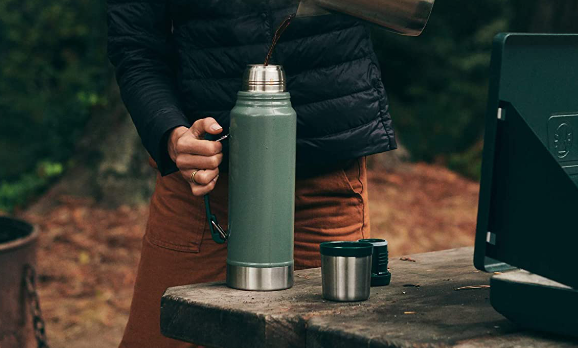
Hot beverages, such as coffee, tea, hot chocolate, and various soups, are essential for staying warm, energized, and comfortable during outdoor activities, including hunting. Here's an expanded look at the role of hot beverages and some tips for enjoying them in the field:
1. Importance of Hot Beverages in the Field:
Warming Effect: Hot beverages provide an immediate warming effect on your body, helping to raise your core temperature and keep you comfortable in cold weather.
Hydration: While hot beverages are primarily known for their warming properties, they also contribute to your hydration. Dehydration can occur in cold weather due to increased respiratory moisture loss, so consuming hot liquids helps maintain your fluid balance.
Energy Boost: Many hot beverages, such as coffee and tea, contain caffeine, which can provide an energy boost and increase alertness during long hunting trips.
Comfort and Morale: Sipping on a warm drink can boost morale and provide psychological comfort, especially during extended hunts in adverse conditions.
2. Types of Hot Beverages:
Coffee: Coffee is a popular choice among hunters for its caffeine content, which provides an energy boost. Instant coffee is a convenient option for outdoor use.
Tea: Tea comes in various flavors and types, including black, green, and herbal teas. Some hunters prefer herbal teas for their calming and soothing effects.
Hot Chocolate: Hot chocolate is a sweet and indulgent option that provides both warmth and comfort. It's especially enjoyable for hunters with a sweet tooth.
Broths and Soups: Portable soup packets or bouillon cubes can be added to hot water to create savory and warming broths or soups.
3. Preparation Tips:
Portable Equipment: Invest in portable and lightweight equipment for heating water, such as a compact camp stove or a portable water heater.
Insulated Containers: Use insulated thermos bottles or travel mugs to keep your hot beverages warm for an extended period. They also prevent spills and make it easy to carry your drink in the field.
Pre-packaged Options: Many hot beverages, including coffee and hot chocolate, are available in single-serve packets or capsules designed for easy outdoor preparation.
Flavor Variations: Experiment with different flavors and types of hot beverages to find what you enjoy the most. Some hunters add honey, sugar, or flavored creamers to enhance taste.
4. Safety Considerations:
Boiling Water: When heating water in the field, be cautious of open flames and ensure that your heating equipment is safely operated. Follow safety guidelines to avoid accidents.
Burn Prevention: Hot beverages can be scalding, so be careful when handling hot containers or drinking directly from them. Use insulated cups or mugs to minimize the risk of burns.
5. Disposal:
- Dispose of used drink containers and any packaging properly. Leave no trace and follow Leave No Trace principles when enjoying hot beverages outdoors.
Hot beverages are not only functional but can also add enjoyment to your hunting experience. A warm drink can provide much-needed comfort, energy, and hydration during cold or challenging conditions. It's an essential part of staying prepared and comfortable while pursuing your hunting adventures in the great outdoors.
9) Stay Active
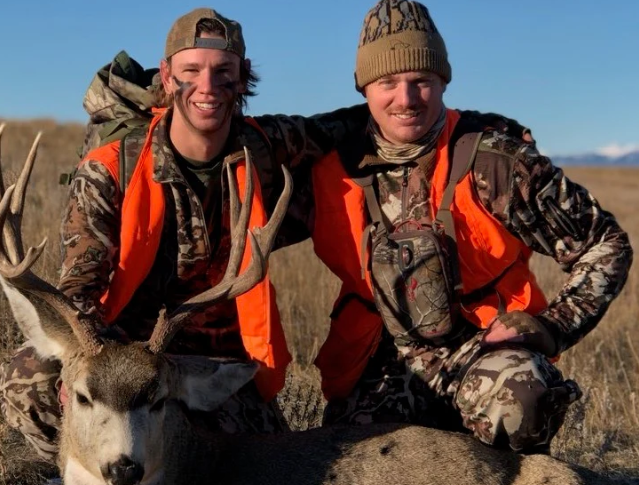
Staying active while hunting is not only beneficial for your physical health but also essential for your overall hunting success and safety, especially in cold weather. Here's an expanded explanation of why staying active is important and how to incorporate it into your hunting routine:
1. Importance of Staying Active:
Temperature Regulation: Physical activity generates body heat, helping you stay warm in cold conditions. When you're active, your muscles produce heat, which keeps your core body temperature up.
Increased Alertness: Staying active helps maintain mental alertness and focus. It's easier to spot game, make accurate shots, and react to changing hunting conditions when you're physically and mentally engaged.
Improved Blood Circulation: Physical activity promotes healthy blood circulation. This is particularly important in cold weather when blood vessels may constrict, reducing blood flow to your extremities. Good circulation helps prevent frostbite and cold-related injuries.
Reduced Stiffness: Prolonged periods of inactivity can lead to muscle stiffness and discomfort. Regular movement helps prevent this and allows you to be more comfortable while hunting.
2. How to Stay Active While Hunting:
Walking and Hiking: One of the most natural ways to stay active while hunting is by walking or hiking. Choose your hunting location strategically to include areas where you can move around easily. Walking or hiking to your hunting spot, exploring the terrain, and tracking game are all forms of physical activity.
Stretching and Flexibility: Incorporate regular stretching exercises into your hunting routine to keep your muscles limber and reduce the risk of cramps or injuries. Simple stretches can be done during breaks or before you start your hunt.
Calisthenics: Basic bodyweight exercises like squats, lunges, and push-ups can be performed during breaks to maintain muscle warmth and flexibility.
Gentle Movement: During long waits in your hunting blind or stand, practice gentle movements to keep your body active without scaring off game. Slightly shift your weight, wiggle your fingers and toes, and roll your shoulders to prevent stiffness.
Stay on the Move: Consider "still hunting," which involves slow, deliberate movement through the terrain while actively scanning for game. This keeps you engaged and ready to react when you spot an opportunity.
Tracking and Scouting: The act of tracking and scouting game can be physically demanding and mentally stimulating. Following tracks and signs keeps you engaged and active throughout the hunt.
Regular Breaks: Plan for regular rest breaks to warm up, hydrate, and recharge. During these breaks, incorporate some light exercise to get your blood flowing.
3. Safety Considerations:
While staying active is crucial for maintaining warmth, it's equally important not to overexert yourself, especially in cold weather. Excessive sweating can lead to wet clothing, which can increase the risk of hypothermia.
Dress in layers that you can easily remove to regulate your body temperature. This allows you to stay active without overheating and then insulate yourself when you stop moving.
Always tell someone your hunting plan, including your location and expected return time. If you plan to stay active for extended periods, make sure someone knows your schedule.
Staying active during a hunting trip not only contributes to your overall comfort and safety but also enhances your hunting success by keeping you alert and engaged. Incorporate movement and exercise into your hunting routine, and remember to strike a balance between staying warm and preventing overheating.
10) Proper Nutrition
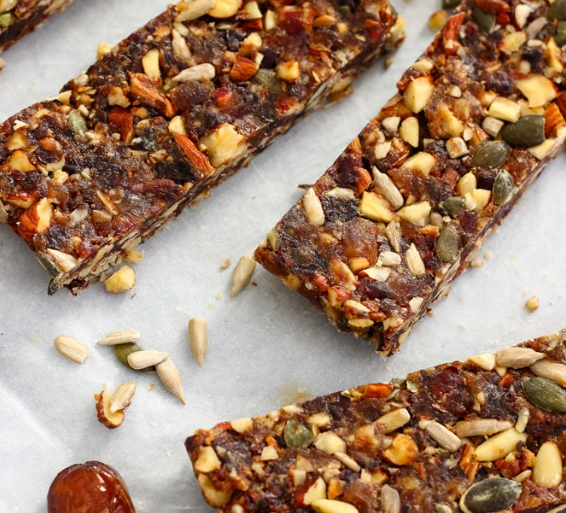
Proper nutrition is a fundamental aspect of hunting and outdoor activities. It not only provides the energy needed for physical exertion but also supports mental alertness and overall well-being. Here's an expanded explanation of why proper nutrition is crucial for hunters and how to ensure you maintain a balanced diet in the field:
1. Energy and Endurance:
- Hunting can be physically demanding, requiring endurance and strength. Proper nutrition provides the necessary fuel to sustain your energy levels throughout the day. Carbohydrates, in particular, are essential for providing quick energy, while fats and proteins help provide sustained energy.
2. Mental Alertness:
- Hunting often demands sharp focus, concentration, and decision-making. A well-balanced diet with adequate nutrients, including vitamins and minerals, supports cognitive function and mental alertness. Omega-3 fatty acids, found in fish and some nuts, are known for their brain-boosting benefits.
3. Stamina and Recovery:
- To stay active and recover from exertion, your body requires a combination of macronutrients (carbohydrates, proteins, and fats) and micronutrients (vitamins and minerals). Proper nutrition helps reduce the risk of fatigue and muscle soreness.
4. Hydration:
- Staying properly hydrated is vital for maintaining physical and mental performance. Dehydration can lead to decreased energy, impaired decision-making, and even cold-related injuries. Always carry enough water with you while hunting and supplement it with electrolyte drinks if necessary.
5. Pack Nutrient-Dense Foods:
- When planning your hunting trip, pack foods that are rich in nutrients and energy. Consider items like trail mix, dried fruits, nuts, energy bars, and jerky. These foods are lightweight, non-perishable, and provide a quick source of energy.
6. Balanced Meals:
- If you plan on preparing meals in the field, aim for a balanced diet that includes carbohydrates (rice, pasta, bread), lean proteins (chicken, turkey, venison), and vegetables. These foods provide essential nutrients and sustained energy.
7. Avoid Empty Calories:
- While some treats are okay, avoid foods and beverages that are high in empty calories, like sugary sodas and highly processed snacks. These can lead to energy spikes and crashes, which are not conducive to sustained energy and focus.
8. Plan for Dietary Restrictions:
- If you have dietary restrictions or preferences (e.g., vegetarian, gluten-free), make sure to pack foods that meet your needs. Many specialty camping and outdoor stores offer a variety of dietary options.
9. Meals Before and After Hunts:
- Start your hunting day with a nutritious meal to ensure you have sufficient energy. After the hunt, refuel with a balanced meal to aid in recovery.
10. Food Safety:
- Pay attention to food safety practices in the field, especially when handling raw meat. Ensure meat is cooked to a safe temperature, and avoid cross-contamination.
11. Supplements:
- Some hunters may choose to bring supplements like multivitamins or electrolyte tablets to ensure they get essential nutrients, especially if their diet in the field lacks variety.
12. Moderation and Balance:
- While maintaining proper nutrition is essential, remember to enjoy your hunting experience and savor special treats. Balance is key to both physical and mental well-being.
13. Local and Sustainable Foods:
- If you have the skills and knowledge, hunting for your own food can be a rewarding way to connect with nature and ensure the quality of your meat. It also promotes sustainable and ethical hunting practices.
Proper nutrition is a crucial part of preparing for a successful and enjoyable hunting trip. A well-balanced diet helps you stay energized, focused, and physically fit, increasing your chances of success and enhancing your overall outdoor experience. Plan your meals carefully, stay hydrated, and enjoy the adventure while nourishing your body for the challenges ahead.
11) Staying Dry
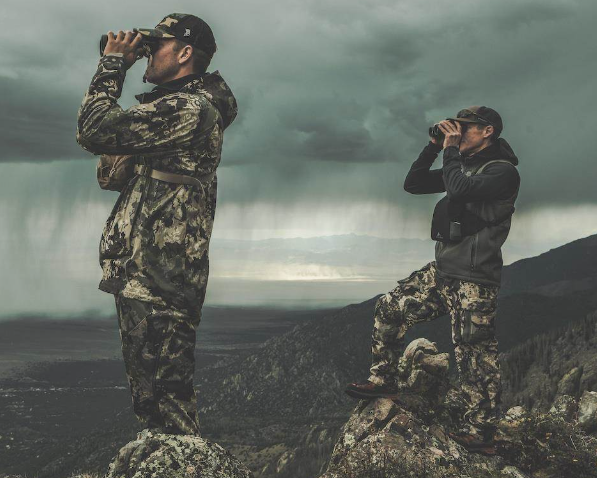
Staying dry is paramount when you're hunting, especially in cold or wet weather. Maintaining dryness helps you stay warm, comfortable, and safe during your outdoor adventures. Here's an expanded explanation of why staying dry is crucial and how to achieve it:
1. Importance of Staying Dry:
Thermoregulation: Wet clothing conducts heat away from your body much faster than dry clothing. When your clothes are wet, you can quickly become hypothermic, even in relatively mild temperatures. Staying dry helps you maintain your core body temperature.
Comfort: Wet clothing is uncomfortable and can cause chafing, blisters, and irritation. Being wet for extended periods can lead to discomfort and decreased morale during your hunting trip.
Safety: In cold conditions, wet clothing and hypothermia can lead to a loss of coordination and cognitive function, which can be dangerous, especially when handling firearms or navigating challenging terrain.
2. Strategies for Staying Dry:
Appropriate Rain Gear: Invest in high-quality rain gear, including waterproof jackets and pants. Look for gear with sealed seams and waterproof zippers to ensure maximum protection from rain and moisture.
Layering: Layer your clothing to manage moisture. Start with a moisture-wicking base layer to move sweat away from your skin, followed by insulating layers, and finish with a waterproof and breathable outer layer.
Waterproof Footwear: Choose waterproof hunting boots with quality waterproof membranes such as Gore-Tex. Gaiters can also be used to seal the gap between your pants and boots, preventing water from entering.
Dry Bags: Use dry bags or waterproof stuff sacks to protect essential gear, like spare clothing, electronics, and food, from getting wet in your backpack.
Umbrella or Tarp: Carrying a lightweight, compact umbrella or tarp can provide shelter from rain and keep you and your gear dry in temporary rain showers.
Pack Cover: Invest in a rain cover for your backpack to prevent water from seeping into your gear through the fabric.
Hydration Management: Use a hydration bladder or water bottle with a waterproof cover to prevent your drinking water from getting contaminated with rain or moisture.
Proper Tent Setup: If camping during your hunting trip, ensure your tent is properly set up with a rainfly to keep the interior dry during wet weather.
Emergency Shelter: Carry a lightweight emergency shelter or bivy sack that can be quickly deployed in case of unexpected rain or emergencies.
3. Maintenance and Care:
Regularly Inspect Gear: Check your rain gear and equipment for signs of wear and tear. Repair or replace any items that are no longer waterproof.
Drying Gear: After each day in wet conditions, take the time to dry your gear thoroughly. Hang wet clothing, boots, and other equipment in a sheltered area to allow them to air out and dry overnight.
Waterproofing Treatments: Consider using waterproofing sprays or wash-in treatments for clothing, tents, and gear to restore or enhance their waterproof properties.
Footwear Maintenance: Clean and maintain your waterproof boots regularly. Remove dirt and debris to prevent damage to the waterproof membrane.
Staying dry is essential for your safety, comfort, and overall enjoyment while hunting in challenging weather conditions. Invest in high-quality rain gear, practice proper layering techniques, and carry the necessary equipment to ensure you can handle wet weather and remain dry during your outdoor pursuits.
Wrapping Things Up
Staying warm when hunting is not merely a matter of comfort but a crucial element for safety, success, and overall enjoyment of your outdoor adventures. Properly managing your body temperature is essential to prevent cold-related injuries, maintain physical and mental alertness, and ensure a successful hunting experience.
To stay warm while hunting, it's essential to:
- Invest in heated clothing, which offers an efficient and convenient way to generate and maintain warmth.
- Embrace layering techniques to regulate your body temperature effectively and adapt to changing weather conditions.
- Incorporate wool clothing into your hunting gear, harnessing its natural insulation, moisture-wicking, and odor-resistant properties.
- Choose appropriate hunting boots, which provide insulation, waterproofing, and traction to keep your feet warm, dry, and safe.
- Accessorize with hats and gloves designed for hunting, offering concealment, warmth, and comfort.
- Utilize thermal blankets as emergency tools to retain body heat and protect against the cold.
By combining these strategies, hunters can ensure that they remain warm and comfortable, even in the harshest of conditions. This not only enhances the hunting experience but also promotes safety and well-being in the great outdoors. Remember that preparation, proper gear, and a vigilant approach to staying warm are the keys to a successful and enjoyable hunting adventure.
